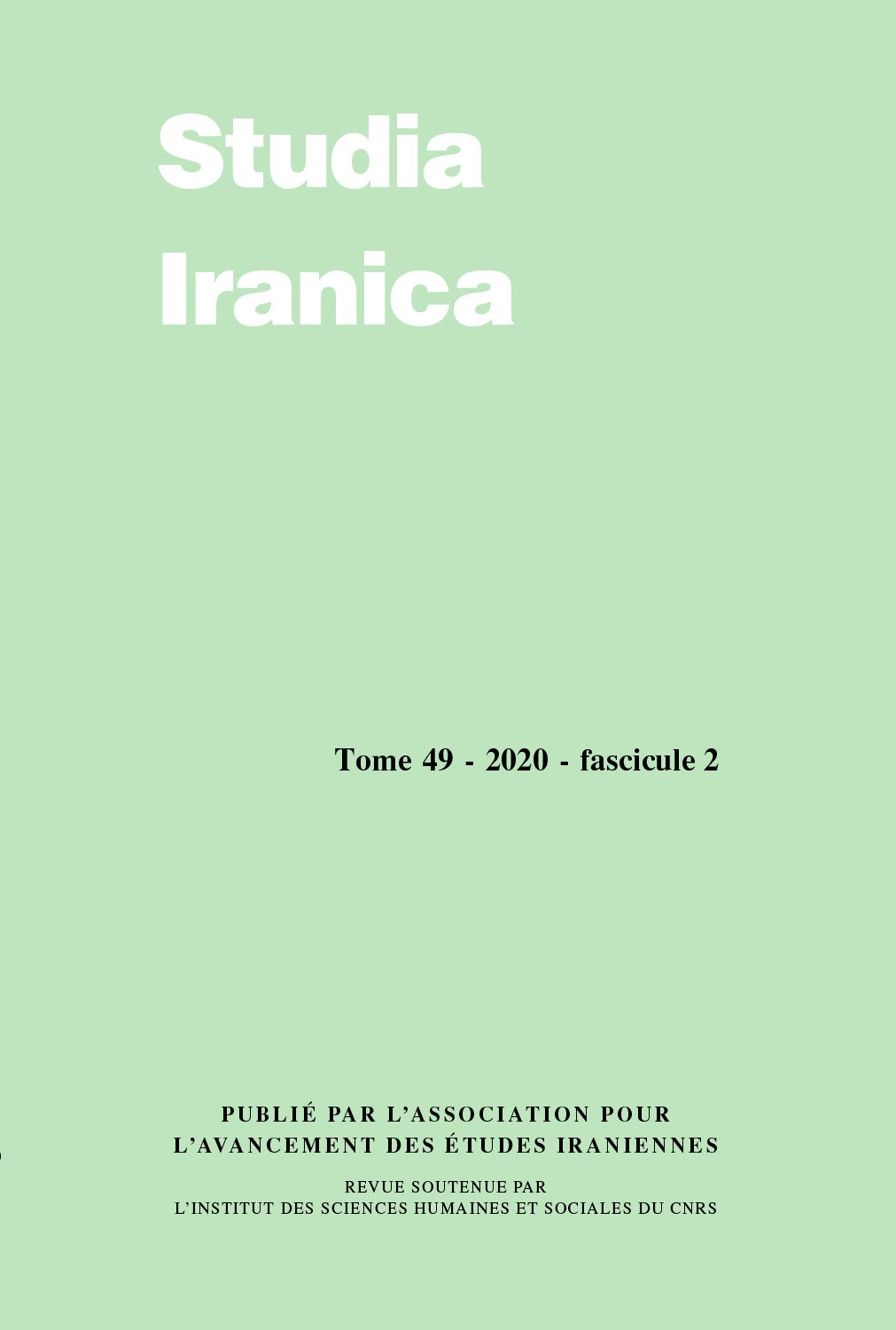 previous article in this issue previous article in this issue | next article in this issue  |

Preview first page |
Document Details : Title: A Sharī'a Court Document from Neyrīz, Fārs (1303/1886) Author(s): BHALLOO, Zahir , REZAI, Omid Journal: Studia Iranica Volume: 46 Issue: 1 Date: 2017 Pages: 77-106 DOI: 10.2143/SI.46.1.3271960 Abstract : This article presents a preliminary study of how an Imamite Shīʻī sharīʻa court in Iran in the Qājār period (1796-1925) issued a judicial decision in a lawsuit relating to religiously endowed property (vaqf). After an introduction to the state of research on sharīʻa court documents from Qājār Iran, we study how the scribe of an Imamite Shīʻī sharīʻa court in Neyrīz, a small town in the south-west province of Fārs, recorded details of a vaqf lawsuit onto a cotton document. Next, based on a comparative analysis between the Neyrīz sharīʻa court document and some previously edited Qājār sharīʻa court documents, we distinguish between the decision of a judge at the end of a lawsuit and the judge’s notarial certification of a claim based on the evidence of one party. We demonstrate that the recording procedures of the Neyrīz sharīʻa court leave no room for doubt that the judge issued a decision after he reviewed the evidence of both sides. This was important in order to ensure effective closure of the lawsuit in the decentralized Qājār judicial system. The article concludes with an edition and a facsimile of the Neyrīz sharīʻa court document. Cet article constitue une étude préliminaire de la manière dont un tribunal chiite imamite de l’Iran qājār (1796-1925) promulgua une décision juridique, notamment dans un procès relatif aux biens religieux (vaqf). Après avoir dressé un état des lieux des recherches sur les documents juridiques de l’Iran qājār, nous étudierons comment le scribe d’un tribunal chiite imamite de Neyrīz, petite ville de Fārs (sud-ouest de l’Iran), enregistra le déroulement d’un procès autour d’un vaqf sur un document en coton. Ensuite, à travers une analyse comparative entre le document du tribunal de Neyrīz et quelques documents juridiques qājārs déjà édités, nous distinguerons la décision d’un juge prononcée suite à un procès, de son attestation notariale d’une prétention basée uniquement sur la preuve d’une partie. Nous démontrerons que les pratiques scribales du tribunal de Neyrīz ne laissent aucun doute sur le fait que le juge trancha le litige après avoir examiné les éléments de preuve des deux parties au procès. Cela fut fondamental pour assurer la clôture du procès dans le système judiciaire qājār décentralisé. L’article se termine avec une édition et un facsimilé du document du tribunal de Neyrīz. |
|


